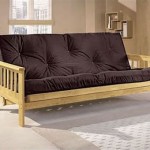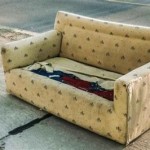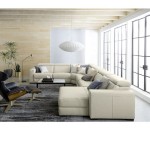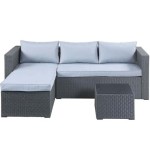The Enduring Appeal of the Cotton Twill Sofa
The cotton twill sofa represents a popular choice for homeowners seeking both comfort and durability. Its appeal stems from a confluence of factors, including the inherent qualities of the fabric itself, its versatility in design, and its compatibility with a wide range of interior styles. Understanding the characteristics of cotton twill and the considerations involved in selecting a cotton twill sofa can assist in making an informed purchasing decision.
Cotton twill, as a textile, distinguishes itself through its unique weaving pattern. Unlike plain weave fabrics where threads interlace in a simple over-under pattern, twill weaves employ a diagonal ribbing effect. This is achieved by passing the weft thread over two or more warp threads, then shifting the pattern by one warp thread for each successive row. This offset creates the characteristic diagonal lines that define twill. The density of the weave, determined by the number of warp and weft threads per inch, further influences the fabric's durability and texture. A higher thread count generally contributes to a tighter weave, resulting in a more robust and smoother fabric.
The properties of cotton itself contribute significantly to the desirability of cotton twill for upholstery. Cotton is a natural fiber, known for its breathability and softness. This makes it a comfortable choice for seating, as it allows air to circulate, preventing the build-up of heat and moisture. Furthermore, cotton is absorbent, aiding in the management of spills and reducing the likelihood of stains becoming deeply embedded. However, this absorbent nature also means that cotton is susceptible to staining if not treated properly. The natural fibers also provide a certain level of hypoallergenic properties that make it a suitable choice for people with skin sensitivities or allergies.
The manufacturing process for cotton twill typically involves several stages. Raw cotton fibers are first processed and spun into yarn. This yarn is then dyed, either before or after weaving, depending on the desired color and pattern. The weaving process itself is typically automated, utilizing large looms that efficiently produce the twill fabric. After weaving, the fabric may undergo various finishing processes, such as pre-shrinking to minimize shrinkage after washing or applying stain-resistant treatments to enhance its practicality. The quality of the raw materials and the precision of the manufacturing process play a vital role in determining the overall quality and longevity of the finished cotton twill fabric.
Durability and Maintenance of Cotton Twill
The durability of a cotton twill sofa is influenced by several factors. The weight and density of the twill fabric itself are paramount. Heavier, tightly woven twills are naturally more resistant to wear and tear. The construction of the sofa frame also contributes to its overall longevity. A sturdy frame, constructed from hardwood, will provide a stable foundation for the upholstery and cushions. The quality of the stitching and seams is equally important, as weak or poorly executed stitching can lead to premature wear and separation.
Maintaining a cotton twill sofa requires regular cleaning and care. Vacuuming regularly helps to remove loose dirt and debris, preventing them from becoming embedded in the fabric. Spot cleaning spills immediately is crucial to preventing stains from setting. Using a clean, damp cloth to blot the spill, working from the outside in, is the recommended approach. For more stubborn stains, a mild detergent solution can be used, but it is essential to test the solution on an inconspicuous area of the sofa first to ensure that it does not damage the fabric or cause discoloration. Professional cleaning is recommended periodically to deep clean the fabric and remove accumulated dirt and stains.
Certain environmental factors can also impact the longevity of a cotton twill sofa. Prolonged exposure to direct sunlight can cause the fabric to fade over time. Therefore, positioning the sofa away from direct sunlight or using curtains or blinds to filter the light can help to preserve its color. Excessive humidity can also contribute to mildew growth, so maintaining a well-ventilated environment is important. Proper care and maintenance can significantly extend the lifespan of a cotton twill sofa, preserving its appearance and comfort for years to come.
Design Versatility of Cotton Twill Sofas
The design versatility of cotton twill sofas is a significant advantage. The fabric's inherent texture and draping qualities lend themselves to a wide range of sofa styles, from traditional to contemporary. Cotton twill can be tailored to create clean, minimalist lines in modern designs or be incorporated into more ornate, traditional styles with tufting and detailing. The fabric also accepts dyes readily, allowing for a vast array of color options. This enables homeowners to select a sofa that complements their existing décor or to make a bold statement with a vibrant color choice.
The texture of cotton twill can also be manipulated to create different visual effects. A tightly woven, smooth twill can create a more refined and sophisticated look, while a looser, more textured twill can impart a more casual and relaxed feel. The addition of subtle patterns, such as herringbone or subtle stripes, can further enhance the visual interest of the sofa. Furthermore, cotton twill can be combined with other materials, such as leather or wood, to create visually striking and textural contrasts. This adaptability makes cotton twill a popular choice for designers seeking to create unique and personalized spaces.
The versatility of cotton twill extends beyond aesthetics to encompass functionality. Cotton twill is a relatively easy fabric to work with, making it suitable for a variety of sofa designs, including sectionals, sleepers, and modular sofas. The fabric's durability makes it a practical choice for high-traffic areas, while its comfort ensures it remains a welcoming place to relax. The ability to customize the color, texture, and pattern of cotton twill sofas allows homeowners to create a seating solution that perfectly aligns with their individual needs and preferences.
Considerations When Choosing a Cotton Twill Sofa
When selecting a cotton twill sofa, several factors warrant careful consideration. The quality of the cotton twill fabric is paramount. Opting for a higher thread count and a tighter weave will ensure greater durability and resistance to wear. Examining the fabric closely for any imperfections or inconsistencies in the weave is also advisable. Consider the weight of the fabric as this will influence the overall durability and feel of the sofa. Heavier fabrics tend to be more durable and offer a more substantial feel.
The construction of the sofa frame is another critical consideration. A frame constructed from kiln-dried hardwood is preferable, as it is less likely to warp or crack over time. Inspect the frame for any signs of weakness or instability. The joinery should be solid and secure, with no visible gaps or loose connections. The suspension system, which supports the cushions, also plays a crucial role in the sofa's comfort and longevity. High-quality coil springs or webbing provide better support and prevent the cushions from sagging over time.
The cushion fill should also be carefully considered. Down-filled cushions offer exceptional comfort but require more maintenance and can be prone to shifting. Foam cushions provide good support and are more resistant to sagging, but can be less comfortable than down. A combination of down and foam offers a balance of comfort and support. Consider the density and firmness of the foam, as this will influence the overall feel of the sofa. Ensure that the cushions are well-constructed and evenly filled to prevent them from becoming lumpy or uneven over time. Finally, consider the style of the sofa and how it complements the existing décor. Evaluate the size and proportions of the sofa to ensure that it fits comfortably within the space. Choosing a sofa that aligns with personal style and functional needs will ensure long-term satisfaction.
In addition to these factors, consider the presence of stain-resistant treatments. While cotton's natural absorbency is a trait, treatments can offer enhanced protection against spills and stains, simplifying the cleaning process and extending the life of the fabric. Be sure to inquire about the specific type of treatment used and its potential impact on the fabric’s feel or appearance.

Twill 2 Piece Sofa The Slipcover Company

Twill Round Arm Sofa The Slipcover Company

Sure Fit Twill Sofa Slipcover Navy Blue One Piece Washable Couch Cotton

Sofa Slipcover Makeover With Cotton Twill In The Perfect Shade Of Blue Slipcovers For Chairs Slip Covers Couch

Sure Fit Supreme 2 Pcs Twill Sofa Slipcover Navy Blue Cotton F

Twill Two Piece Sofa Slipcover The Company

Cotton Twill One Piece Sofa Slipcover In Tan 1 Kroger

Cotton Twill 2 Piece Sofa Slipcover In Natural 1 Gerbes Super Markets

Korean Style Sofa Cover Best In Singapore Oct 2024 Lazada Sg

Cotton Twill Sofa Cover Boho Circle Embroidered Sectional Couch Slipcover Solid Color Washable Non Slip Furniture Protector For Dogs Pets Children Temu








